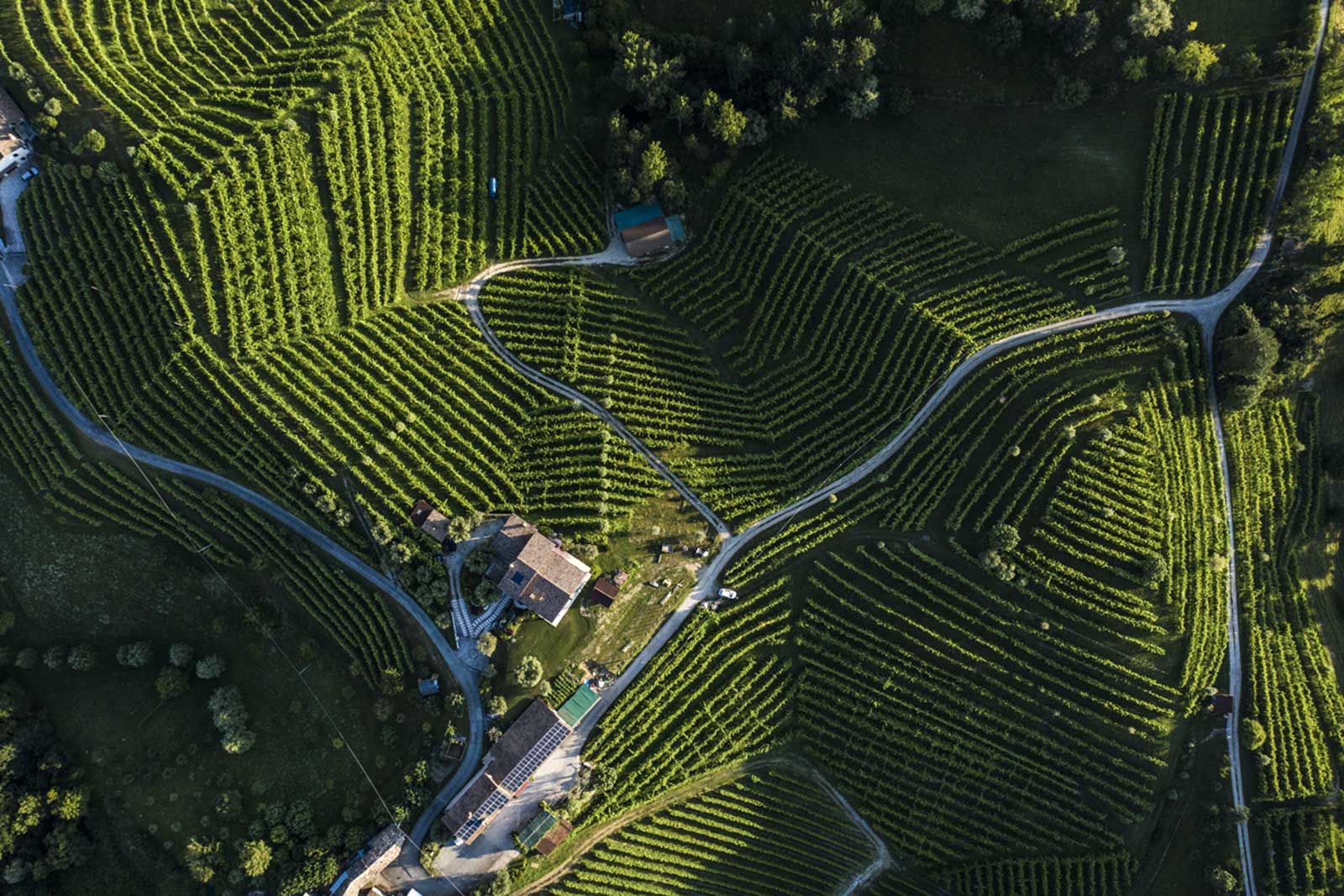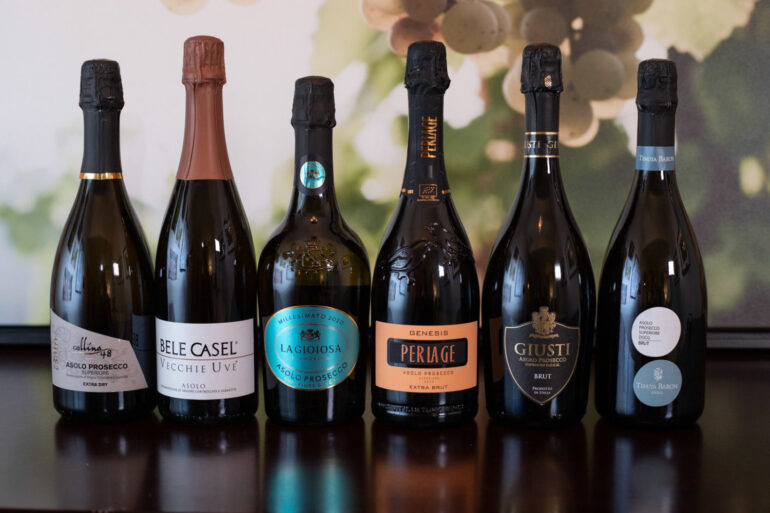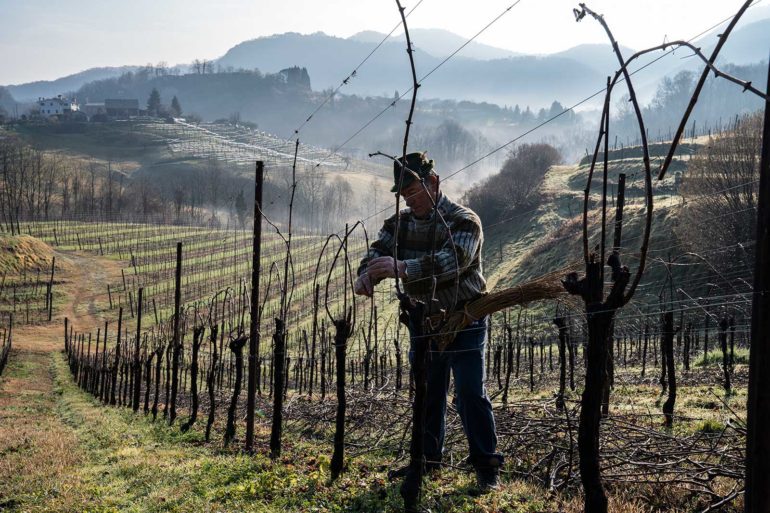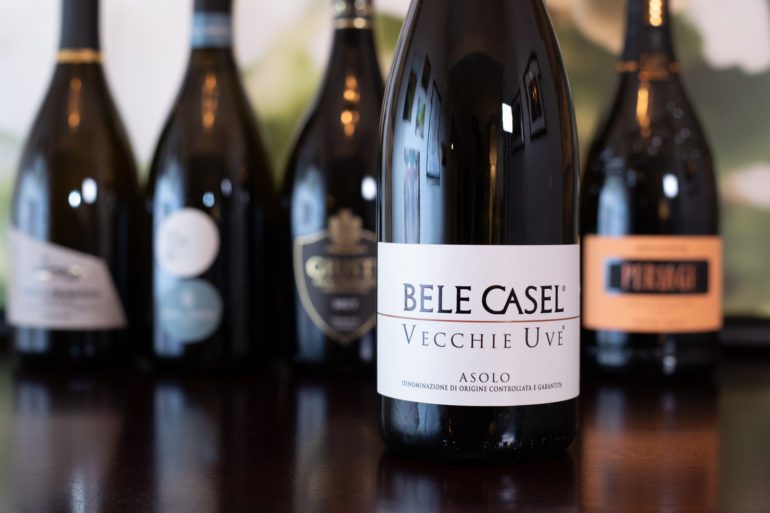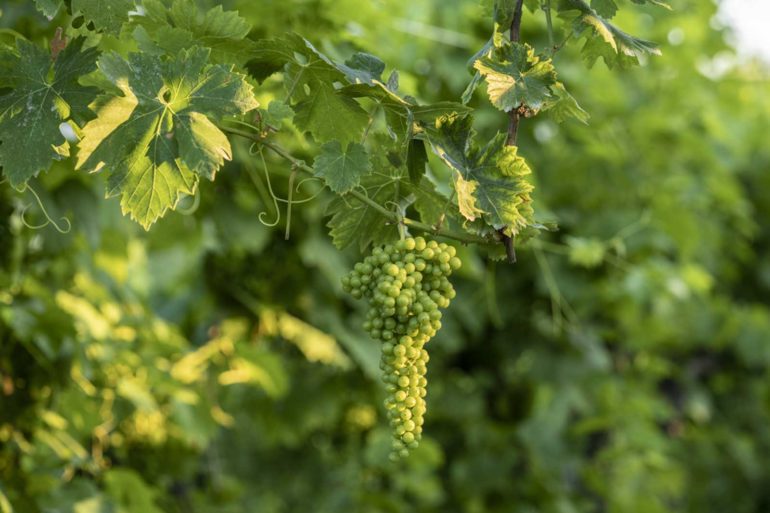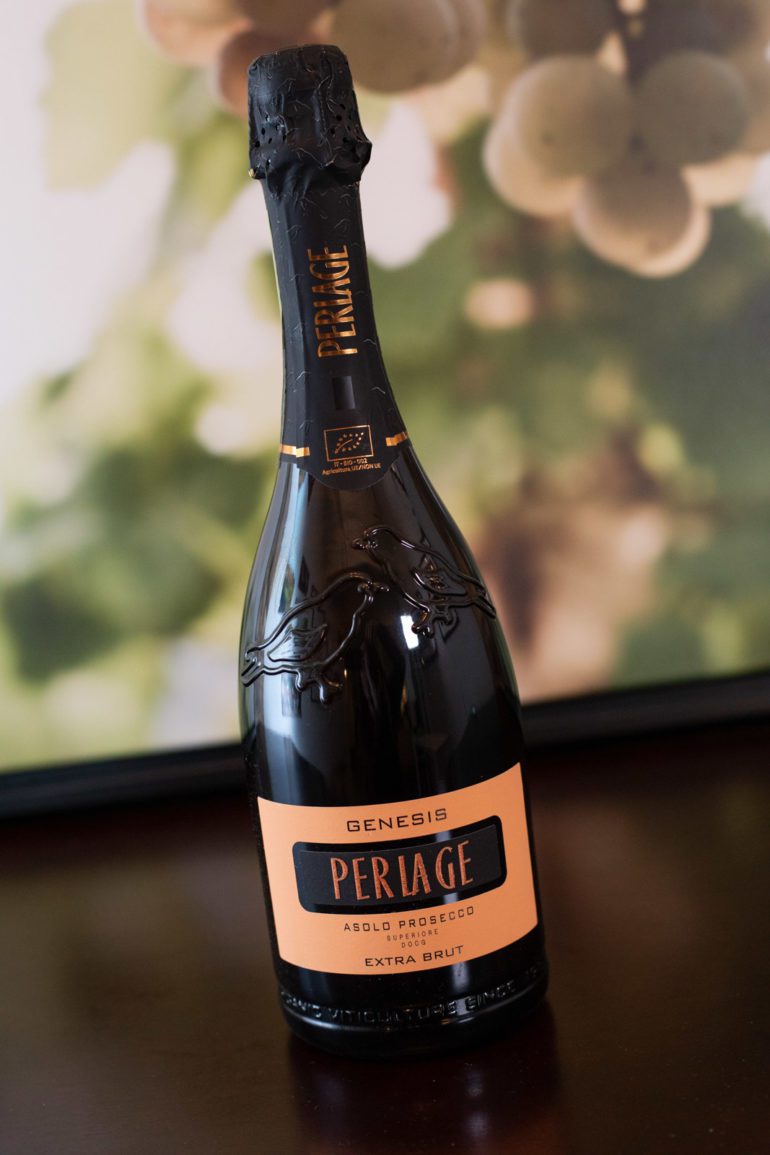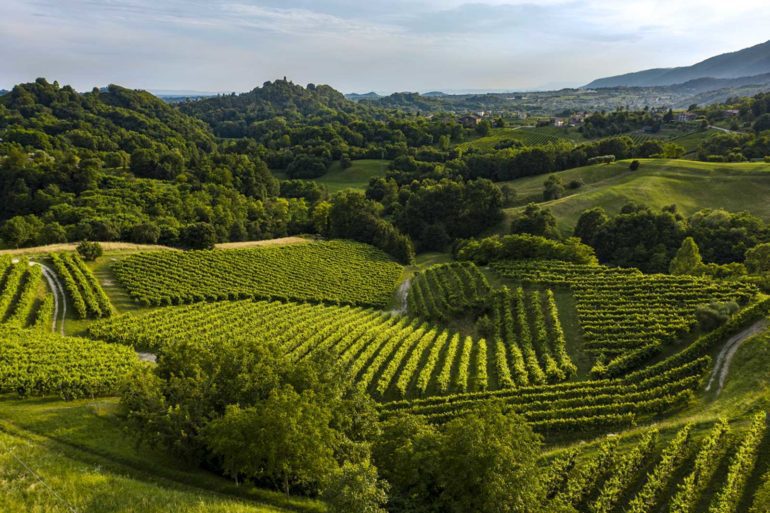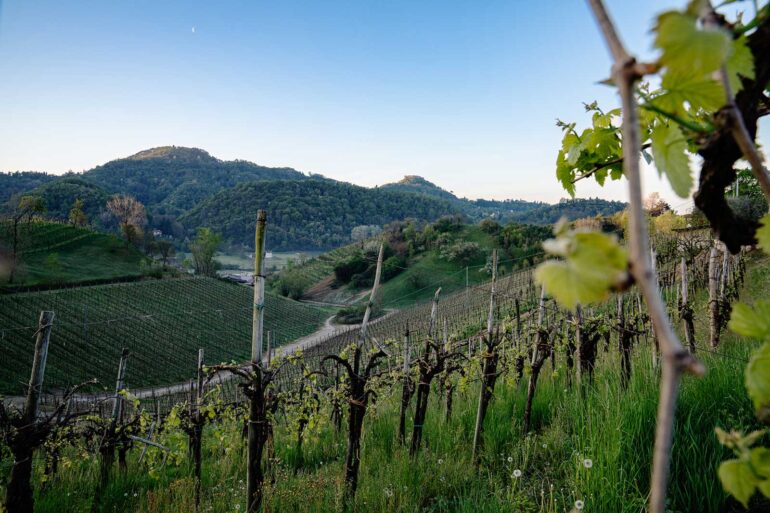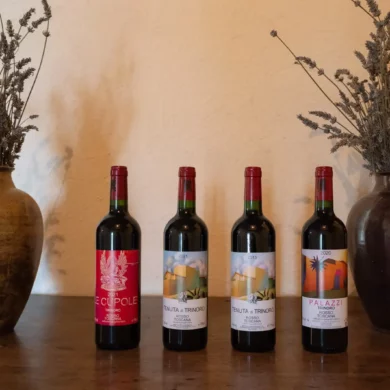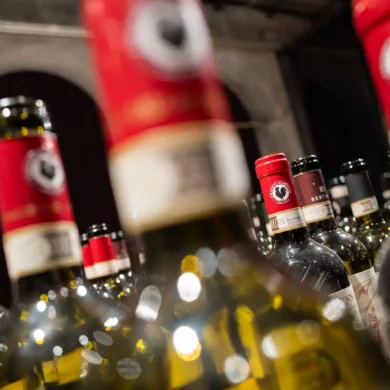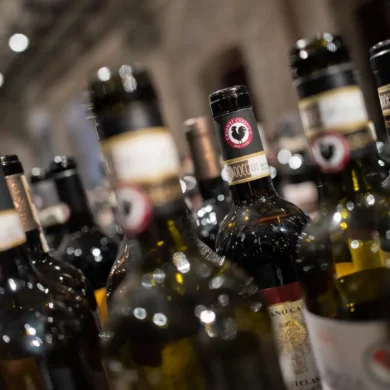Long before wine swept me off of them, my feet were devoted to hiking and backpacking. They pounded trail as soon as the snows melted in Colorado, pursuing a kind of enlightenment one only gets in nature. Those feet were adorned with the most indestructible pair of hiking boots a young man could afford, from the Italian shoe company Asolo. Named after the tiny city in Veneto, Italy where the company was formed, Asolo specializes in heavy-duty footwear for hostile environments. They look like they can take a direct hit from a bazooka.
I loved those boots, but they were probably overkill for the routes I was climbing. Regardless, when I hear that name, even to this day, I do not think of frothy bubbles, delicate fruit and good-timing it at aperitivo. I think of scrambling over scree fields, running from lightning storms, and trudging up slick, muddy paths with a goal of getting deeper and deeper into the wild.
Yet, here I am today — a good 10 years into my wine career — finally getting to know the other side of Asolo: the city’s under-the-radar Prosecco wines. Only 18.7 million bottles of this wine were produced in 2020. I say “only” because when you compare it to Conegliano-Valdobbiadene Prosecco Superiore (92 million bottles) and the much larger, ever-popular Prosecco DOC appellation (500 million bottles), you get a sense for why Asolo’s version seems boutique.
Pronunciation tip: It is easy to see the solo in Asolo and say “uh-SOH-loh,” but as I found out it is actually pronounced “AHZ-oh-loh.”
In terms of total land area, it is roughly the same size as Conegliano-Valdobbiadene, yet significantly more forested. It also receives more rain, which is significant because the Glera grapevine is a thirsty one. Lastly, there are only 40 bottlers of Asolo Prosecco, and among them, only two produce more than 1 million bottles a year. If you love Prosecco but want a little more intimacy with who produced it and their family story, Asolo is a great place to land.
At their core, these wines are similar to those from Conegliano-Valdobbiadene Prosecco Superiore DOCG and the Prosecco DOC. Eighty-five percent of the blend must be from the Glera grape. The wine is made via the tank-method, so as to capture the delicate fruity-and-floral tones of the wine, rather than overwhelm them with bottle-fermentation’s bakery of aromas. You’ll need not stray into uncharted waters to enjoy these wines: they’re for apertivo, light snacks, gathering with friends. Ease all the way.
Yet, there is plenty for wine obsessives to dive into as well. My personal interest was piqued ahead of time because Andrew Jefford told me that Asolo Prosecco was one of the biggest surprises he’d recently encountered. Quite the endorsement.
During my tasting of six wines, I once again came back to the role of sugar as Prosecco’s most noticeable trait. Brut versions (the least amount of sugar) have a ripping acidity and show high-toned, crisp fruity flavors. The Extra Dry versions (yes, that means more sugar, even with the word “Dry” in it … don’t ask me) seem deeper, more opulent and richer.
Below are the six wines, four of which ranked in the same tier. I tasted them during a webinar midday, sealed them and refrigerated them, then shared them with friends in the neighborhood that night. None of them are wine geeks, so their opinions were all the more important to me! Their consensus: these wines had pure, good-to-the-last-drop tastiness. The one I kept for myself (a sign it was still saying things I wanted to write down) was from Bele Casel. I give it a slight edge as my recommended bottle.
Ratings are based on our five-star tier system. Learn more about how we rate wine.
NV Perlage Winery “Genesis” Asolo Prosecco Extra Brut
Perlage Winery was one of the first Prosecco producers to convert to organic practices. This is important because the steep terrain and heavy rains typical of the area make it highly erosion prone. Chemical use strips away the root structure of secondary plants and kills microbial life — both accelerants to erosion. However, those rains can lead to maladies like mildew and rot, which makes organic viticulture a bit more of a challenge. Perlage shows it can (and should) be done.
Based in Farra di Soligo, this is not an Asol0-based winery, but rather a producer who uses fruit from Asolo and follows the DOCG guidelines to qualify. The Genesis Asolo Prosecco Extra Brut (★★★★ 1/2) has moderately intense aromas that suggest pineapple and crisp green apple. I found it ever-so faintly floral, but lovely and inviting, with a noticeable fruitiness on the palate that’s easy to enjoy. The high acidity carries it along, but if I had a critique, it would be the finish, which is a bit too tart for my taste.
NV Bele Casel “Vecchie Uve” Asolo Prosecco Superiore Extra Brut
Bele Casel is an Asolo Prosecco specialist, and a member of the Federazione Italiana Vignaioli Indipendenti (FIVI), a group focused on promoting the independent, artisan winemakers of Italy. I normally don’t care about such organizations, but you’d be surprised how many incredible Italian wines have their logo on the back label. Consider it another buyer’s tip.
The “Vecchie Uve” (★★★★ 3/4) was the most complex of the six wines tasted, and as a result, the one I’d recommend if you have a choice. It comes from an organic vineyard in the hamlet of Monfumo north of Asolo whose vines have an average age of 50 years. One can assume that the depth to this wine starts from these old vines. But then, after secondary fermentation, the wine spends a full year on the lees, which is highly unusual for Prosecco. Producers tend to avoid longer lees aging in Prosecco because it can overwhelm Glera’s inherent fruitiness. But with this wine, that old-vine fruit seems to handle it just fine.
So how does the translate in the glass? Ever so subtly. If this were a traditional-method sparkling wine from Chardonnay the differences would be far more noticeable, but Prosecco in general has a narrower range of aromatic and textural complexities. The fruit tones are purely pear, and simply delicious as a result (personally, I am a bit of a pear freak). I also caught a whiff of lemon-touched chamomile tea which invited me further into the glass. The wine itself is still very crisp, even austere at first. Yet the fruit flushes through the palate on a bit of delay, giving this wine a little bit more intrigue and shape-shifting than the others. “This is the goldilocks in the lot,” I wrote in my notes. “Just right.” I scored it accordingly.
2020 Tenuta Baron Asolo Prosecco Superiore Brut
Here’s another wine from a small, family winery based in the Asolo region. Started by Domenico Baron in the 1970s, the estate has now been passed down to his two sons, who run it. Their Asolo Prosecco Superiore Brut (★★★★ 1/2) had the most suppressed aromas of all the wines sampled, but was conversely quite assertive on the palate, offering up bold swaths of sweet apple and black licorice tones. Rounder and more textural, yet bright and hospitable, the wine concludes with a finish that is on-point.
NV Giusti Asolo Prosecco Superiore Brut
Despite its mostly humble station, Asolo Prosecco does have some glamour. Giusti has all the hallmarks of ambition you’d expect from the bubbles-fueled craze Prosecco has generated over the last decade, including a new, €20-million winery and the recent hiring of consultant oenologist Graziana Grassini, of Tenuta San Guido / Sassicaia fame.
On the nose, their non-vintage Asolo Prosecco Superiore Brut (★★★★ 1/2) is perhaps the most aromatic of the lot — a profusion of crisp apples and sage. This carries through to the palate, where the wine is full and rich, with no jagged edges at all. It does lack in length a bit, with a stunted finish, but I don’t know anyone who drinks Prosecco with a stopwatch, so who cares?
NV Bedin “Collina 48” Asolo Prosecco Superiore Extra Dry
As the second bottler of the Asolo Prosecco appellation, the Bedin family carries added historical significance for the local wine industry. They are also one of the largest producers. With 14g/L of residual sugar, the “Collina 48” Asolo Prosecco Superiore Extra Dry (★★★★ 1/2) resides in the Extra Dry category, lending the wine’s sharp pineapple juiciness a lingering sweetness on the finish. There was a surprising amount of saltiness to this wine … more a sensation than a flavor or aroma. From my perspective, the Extra Dry category of Prosecco — those from Asolo included — serve as better food-pairing wines with more versatility than the Brut versions.
2020 La Gioiosa Asolo Prosecco Extra Dry
As part of the Villa Sandi Group, the La Gioiosa brand might be one of the easier Asolo Prosecco wines for you to find. Of these six, the 2020 Asolo Prosecco Extra Dry (★★★★ 1/4) was also the ripest and sweetest, with a full-throttled fruitiness of ripe pears, candied green apple and delicate white flowers. This wine was quite a bit more decadent than the others — the stylistic opposite of Bele Casel and Perlage’s versions above. However, it had the shortest lifespan, too, fading in terms of structure and bubbles within an hour. The finish was also somewhat bitter.
Note: These wines were provided as samples by Studio Cru, a press relations firm representing the Consorzio Vini Asolo Montello. Learn more about our editorial policy regarding samples.
All landscape images used in this article are republished with permission: ©Consorzio Vini Asolo Montello.
All bottle images ©Kevin Day/Opening a Bottle.

